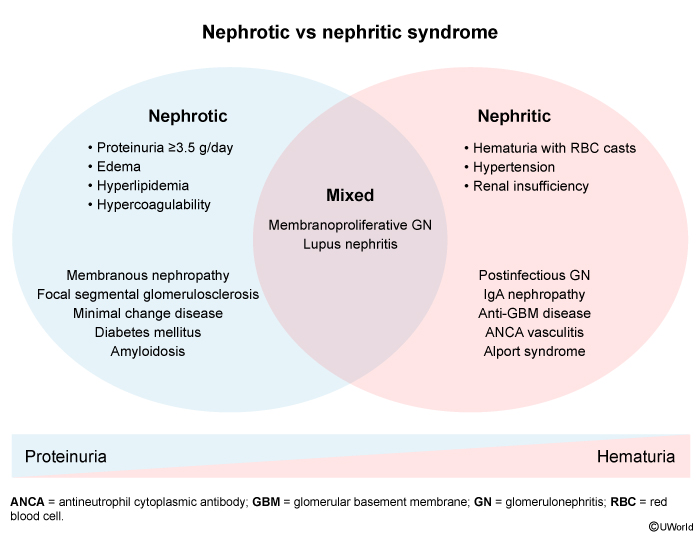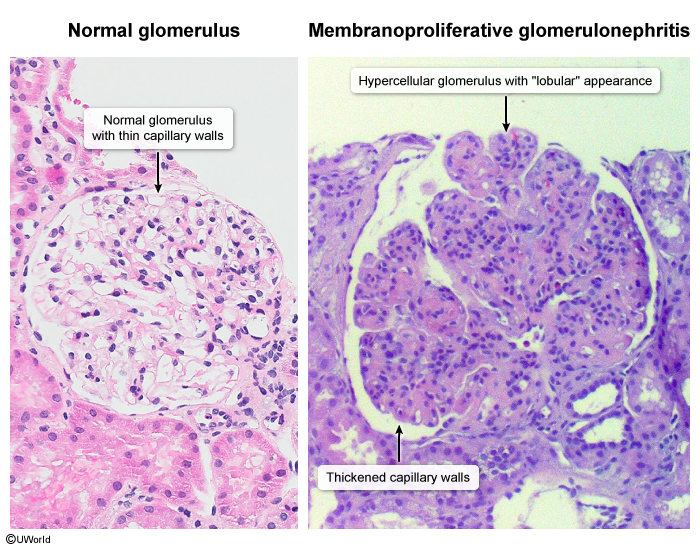Membranoproliferative Glomerulonephritis
Article Sections
Introduction
Membranoproliferative glomerulonephritis (MPGN) is a histopathologic pattern of glomerular injury with a wide range of clinical manifestations, including nephrotic syndrome (heavy proteinuria, hypoalbuminemia, edema), nephritic syndrome (hematuria, hypertension, renal dysfunction), or mixed nephrotic-nephritic syndrome. Historically categorized into types I, II, and III based on electron microscopy findings, MPGN's contemporary classification emphasizes etiology, distinguishing between immune complex–mediated and complement-mediated MPGN.
Etiologies and pathophysiology
MPGN accounts for roughly 5%-10% of biopsy-confirmed glomerulonephritis cases. It can arise from 2 distinct pathways: immune complex deposition or dysregulated complement activation.
Immune complex–mediated MPGNMPGN mediated by immune complexes (antigen-antibody complexes) constitutes 70%-80% of cases, predominantly affecting adolescents and young adults. It is associated with:
- Chronic infection: Hepatitis C virus (HCV) is the most common cause; the mechanism involves cryoglobulin formation (discussed in a separate article). Additional causes include hepatitis B virus (HBV) and endocarditis.
Continue Learning with UWorld
Get the full Membranoproliferative Glomerulonephritis article plus rich visuals, real-world cases, and in-depth insights from medical experts, all available through the UWorld Medical Library.
Figures

Images
